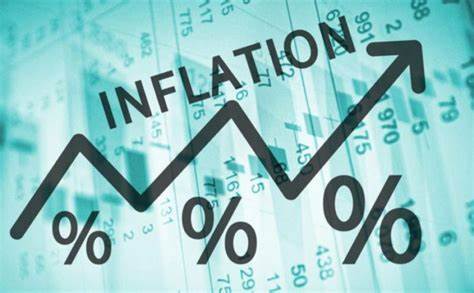Businesses’ one-year CPI inflation forecast jumped to 5% in August: IIM survey

Businesses’ one-year CPI inflation forecast jumped to 5% in August: IIM survey
The latest Business Inflation Expectations Survey (BIES) conducted by the Indian Institute of Management-Ahmedabad (IIM-A) reveals that businesses in India have raised their forecast for one-year-ahead headline retail inflation. In August, businesses anticipated a one-year-ahead inflation rate of 5 percent, which represents a significant increase from the 4.56 percent forecast in June.
The BIES is designed to measure the inflation expectations of businesses and includes predictions for the Consumer Price Index (CPI) inflation one year into the future. These predictions align with the meetings of the Reserve Bank of India’s (RBI) Monetary Policy Committee (MPC), which determines monetary policy decisions, including interest rates.
The MPC began its three-day meeting on October 4, and its interest rate decision is scheduled to be announced on October 6. It is widely expected that the RBI will maintain the policy repo rate at 6.5 percent for the fourth consecutive time.
However, economists anticipate that the central bank may revise its inflation forecast for the fiscal year 2023-24 upward by 20-30 basis points. This adjustment may come in response to recent developments, as India’s CPI inflation reached a 15-month high of 7.44 percent in July before moderating to 6.83 percent in August.
One basis point represents one-hundredth of a percentage point, so even a relatively small change in inflation expectations can have significant implications for monetary policy decisions and economic planning. The BIES provides valuable insights into how businesses perceive and anticipate inflation, which can influence their strategies and decisions in the marketplace.
The upcoming release of inflation data for September, expected on October 12, is anticipated to show a further increase, potentially marking the third consecutive month where inflation remains above the upper bound of the Reserve Bank of India’s (RBI) 2-6 percent tolerance band.
According to ratings agency CareEdge, inflation is projected to exceed the RBI’s earlier projection for July-September by approximately 60 basis points. As a result, it is likely that the central bank will revise its whole-year inflation projection upward, raising it from the previous estimate of 5.4 percent to 5.6 percent.
If the RBI indeed makes an upward revision to its inflation forecast, it could impact current market expectations regarding interest rate adjustments. Market expectations have included the possibility of a rate cut in the first quarter of 2024-25. However, a higher inflation projection by the central bank could influence the timing and direction of monetary policy decisions.
In the past, MPC external member Ashima Goyal indicated that a sequence of inflation forecasts consistently below 5 percent would provide an opportunity for a reduction in the repo rate, which is the key policy interest rate controlled by the RBI.
The RBI’s most recent forecast, issued in August, predicted CPI inflation at 6.2 percent for July-September, 5.7 percent for October-December, and 5.2 percent for each of the first two quarters of 2024. The central bank’s inflation forecasts play a crucial role in shaping its monetary policy decisions and are closely watched by financial markets and economists for indications of future policy actions.
While businesses have revised their one-year-ahead retail inflation expectations significantly higher compared to June, their own inflation expectations, based on the costs they face, remained unchanged from July at 4.31 percent. This observation suggests that the recent surge in Consumer Price Index (CPI) inflation has not had a substantial impact on firms’ inflation expectations.
According to Abhiman Das, a professor of economics at IIM-A who conducts the Business Inflation Expectations Survey (BIES), the average inflation expectation of firms has remained anchored around 4 percent for the past four consecutive months. The BIES predominantly surveys manufacturing firms and is based on responses from approximately 1,000 companies, with most of the responses received in the second half of September.
Inflation expectations are closely monitored by policymakers, as anchoring them is crucial for ensuring price stability. The Reserve Bank of India’s Monetary Policy Committee (MPC) has emphasized its commitment to aligning inflation with the target and anchoring inflation expectations to maintain economic stability.
The stability of firms’ inflation expectations, despite fluctuations in CPI inflation, indicates the need for careful monitoring and policy measures to manage inflationary pressures and maintain confidence in the broader economy. Policymakers will continue to watch these expectations closely to inform their decisions regarding monetary policy and economic management.
The inflation expectations survey conducted by IIM-Ahmedabad is one of the two major surveys conducted in India to gauge inflation expectations. The other survey is the Reserve Bank of India’s (RBI) Inflation Expectations Survey of Households. In the RBI’s survey, which was released on August 10, both three-month-ahead and one-year-ahead inflation expectations among households decreased by 10 basis points each, reaching 10 percent and 10.3 percent, respectively, in July. This moderation in inflation expectations aligns with the overall trend of easing cost pressures.
The reduction in cost pressures has not only contributed to the stabilization of inflation expectations but has also had a positive impact on sales and profit margin expectations among firms. According to the latest IIM survey, the percentage of firms reporting “much less than normal” or “somewhat less than normal” sales in August decreased to 52 percent, down from 61 percent in July. Additionally, 39 percent of firms now anticipate profit margins to be “about normal” or greater, up from 32 percent previously.
In this context, the survey defines “normal” as the average of the preceding three years, excluding the period affected by the Covid-19 pandemic. The improvement in sales and profit margin expectations indicates a positive outlook among businesses, which can have broader implications for economic growth and stability.




